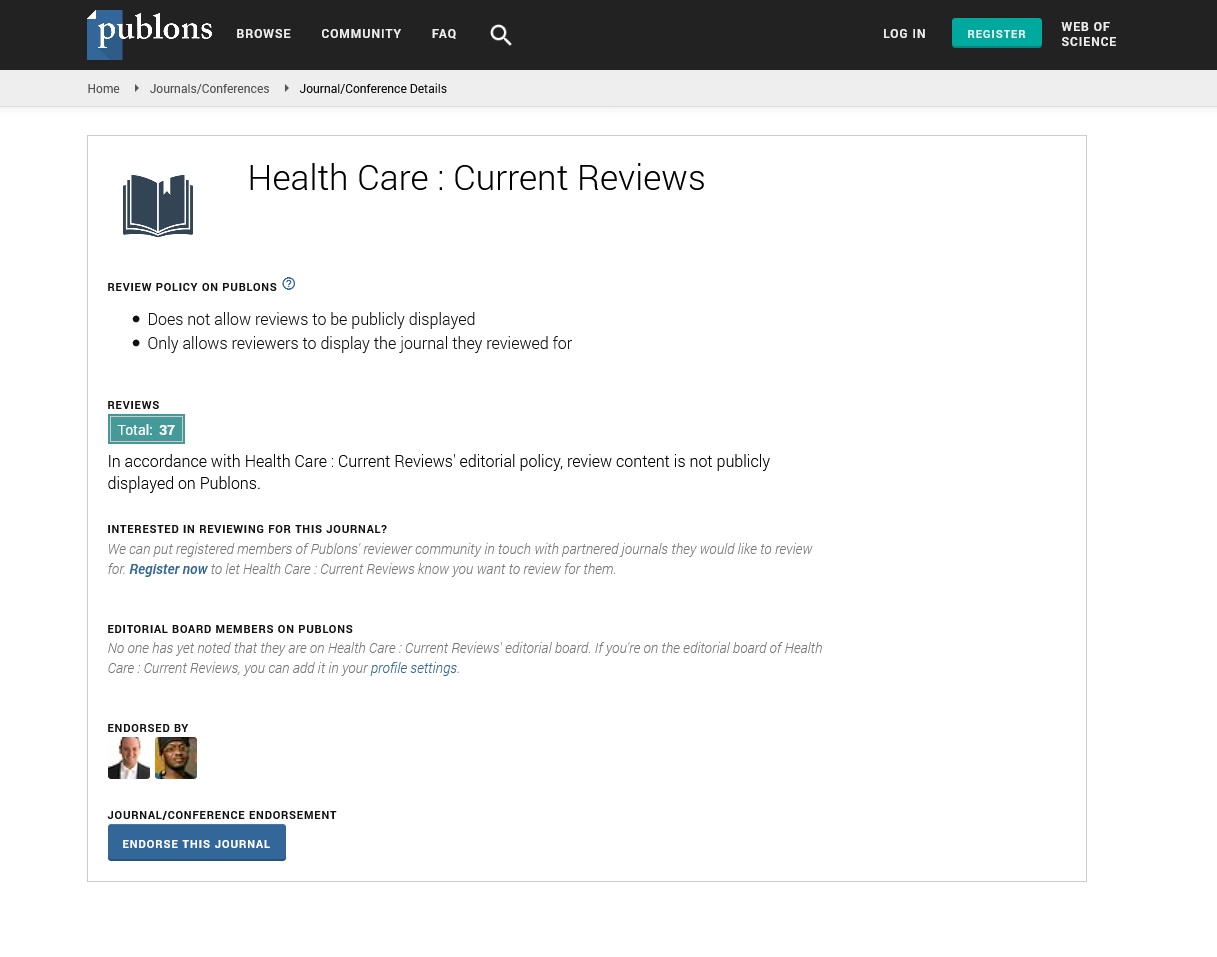Indexed In
- Open J Gate
- Academic Keys
- RefSeek
- Hamdard University
- EBSCO A-Z
- Publons
- Geneva Foundation for Medical Education and Research
- Google Scholar
Useful Links
Share This Page
Journal Flyer

Open Access Journals
- Agri and Aquaculture
- Biochemistry
- Bioinformatics & Systems Biology
- Business & Management
- Chemistry
- Clinical Sciences
- Engineering
- Food & Nutrition
- General Science
- Genetics & Molecular Biology
- Immunology & Microbiology
- Medical Sciences
- Neuroscience & Psychology
- Nursing & Health Care
- Pharmaceutical Sciences
QSAR by hansch analysis
3rd Indo-Global Summit & Expo on Healthcare
October 05-07, 2015 New Delhi, India
Narasimhan B
Maharshi Dayanand University, India
Scientific Tracks Abstracts: Health Care: Current Reviews
Abstract:
The identification of a new drug molecule using the traditional medicinal chemistry approach requires lot of synthesis, time and money. It was identified that out of billions molecules synthesized, around one or two molecules reach the clinical trials. This produces hurdle in the discovery new chemical entities (NCEs) for the treatment of various diseases by traditional drug discovery process. The aforementioned facts necessitated researchers to search for the alternate methods which determine the biological activity of the molecules without synthesizing them. Since the 1960s, enormous efforts have been made by various investigators to develop quantitative parameters to describe the biological activity. During this period, Hansch and co-workers made important breakthroughs for biological QSAR with electronic, stereo and hydrophobic parameters to be known as the Hansch analysis. The Hansch analysis involves the development of a mathematical model which correlates the physicochemical parameters of molecules (lipophilic, electronic, steric and toplogical properties etc.) with their biological activity. The developed Hansch model can be used to predict the activity of NCEs without the need to synthesize them. The various facts to be considered before the development of Hansch analysis are: Rule of thumb, Selection of training and test set, Cross validated r2 (r2cv or q2), Outlier detection and their removal, Multicollinearity (autocorrelation) observed between the parameters and Detection of systemic errors. The various steps involved in the development of Hansch analysis include Sketch and energy minimize the molecules under test, Calculate the molecular descriptors, Convert the biological units into logarithmic units, Derive QSAR equation using training set by linear or multiple linear regression (MLR) and Cross validate the QSAR model by calculation of q2 and ability of developed QSAR model to predict the biological activity of test set which is excluded from the model development.
Biography :
Currently Prof. Narasimhan is officiating as Head and Dean, Faculty of Pharmaceutical Sciences, Maharshi Dayanand University, Rohtak. His key areas of research includes synthesis of medicinally important compounds, computer aided drug design, anticancer and antimicrobial screening and new drug development. Up to now, Associate Professor Narasimhan has published more than 120 research articles in SCI journals with a H index of 25, and also serves as an Editorial Board Member of Hygeia: Journal of Drugs and Medicines, Journal of Pharmaceutical Technology, Research and Management and Current Science Perspectives and a Reviewer of more than 20 international journals of repute. He is currently serves as a member of various academic bodies of the University, All India Council for Technical Education, and as well the executive member of Association of Pharmaceutical Teachers of India, Haryana Branch.
Email: naru2000us@yahoo.com

